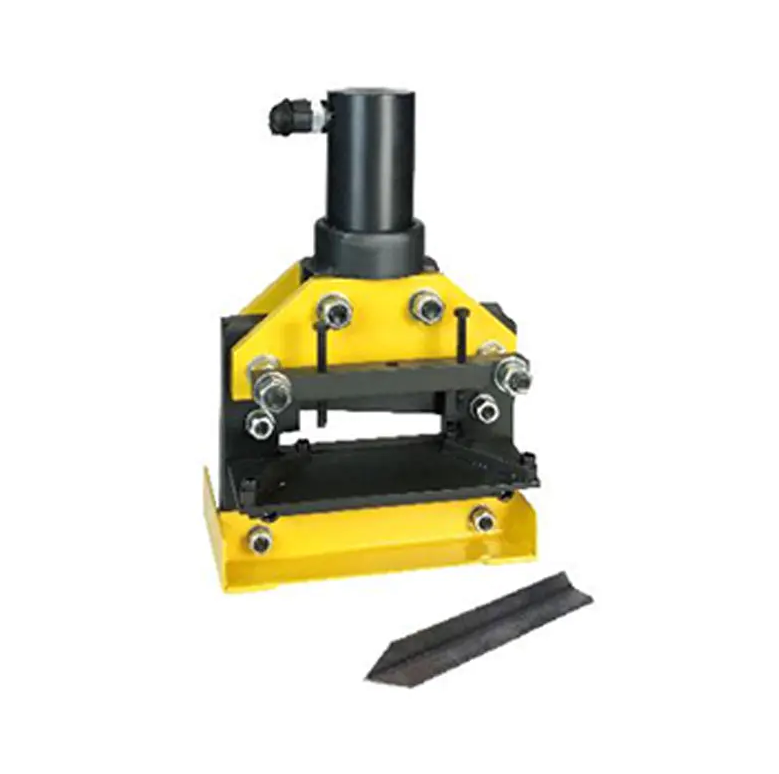The cutting speed of a Hydraulic Angle Steel Cutter is a critical parameter that directly impacts the efficiency and productivity of metal fabrication processes. This type of cutter is specifically designed to handle angled steel profiles, which are commonly used in construction, manufacturing, and structural engineering. Understanding how the cutting speed is determined and optimized can provide valuable insight for users who rely on these machines for precise and rapid steel processing.
Several factors influence the cutting speed of a Hydraulic Angle Steel Cutter. Primarily, the power of the hydraulic system plays a significant role. These machines utilize hydraulic pressure to drive a blade or shear mechanism that slices through steel angles. Higher hydraulic pressure and flow rates generally enable faster cutting speeds by delivering greater force to the cutting tool, allowing it to cut through steel more quickly and efficiently. However, the hydraulic system must be carefully calibrated to maintain a balance between speed and cutting quality.
The thickness and type of the steel angle being cut are also major considerations. Thicker or harder steel requires more force and time to shear cleanly, which naturally reduces cutting speed. Conversely, thinner and softer steel profiles can be cut more rapidly without compromising the integrity of the cut. Therefore, manufacturers of Hydraulic Angle Steel Cutters often provide specifications for the maximum cutting thickness and recommended materials to ensure optimal performance.
Blade sharpness and design impact cutting speed as well. The cutter’s blade must be made of high-quality, durable materials capable of maintaining sharpness over prolonged use. A dull blade increases cutting resistance, forcing the hydraulic system to work harder and slowing down the overall cutting speed. Some advanced models feature replaceable or self-sharpening blades to maintain consistent cutting speeds and reduce downtime.
Another important factor is the machine’s cycle time — the duration required to complete one cut, including blade engagement and retraction. Efficient hydraulic angle steel cutters are designed to minimize cycle times through rapid blade movement and quick hydraulic system response. The smoother and faster the cycle, the higher the effective cutting speed, enabling more cuts to be completed within a given timeframe.
User operation and machine settings can also affect cutting speed. Operators with experience can optimize parameters such as hydraulic pressure, blade alignment, and cutting angle to maximize throughput. Many modern Hydraulic Angle Steel Cutters come with adjustable controls that allow fine-tuning of cutting speed based on the material and production requirements.
In addition to speed, safety and cut quality remain paramount. The machine must operate at a speed that ensures clean cuts without damaging the steel or causing excessive wear to the blade and hydraulic components. Manufacturers often provide guidelines to balance cutting speed with durability and safety standards.
In conclusion, the cutting speed of a Hydraulic Angle Steel Cutter depends on a combination of hydraulic power, steel material characteristics, blade condition, machine design, and operator skill. Understanding these factors allows users to maximize efficiency while maintaining the quality and safety of the cutting process. As hydraulic cutting technology advances, we can expect further improvements in speed and precision, making Hydraulic Angle Steel Cutters an indispensable tool in modern steel fabrication.
The corner angle cutting machine is dedicated to angle cutting, bending, and cutting of the multi-functional hydraulic angle iron processing machine, as long as the replacement tooling mold is on the line. It is a new type of hydraulic tool, mainly used for power systems (engineering, maintenance, tower fill), bridges, and telecommunications. geology. construction and installation industries, such as field operations.
